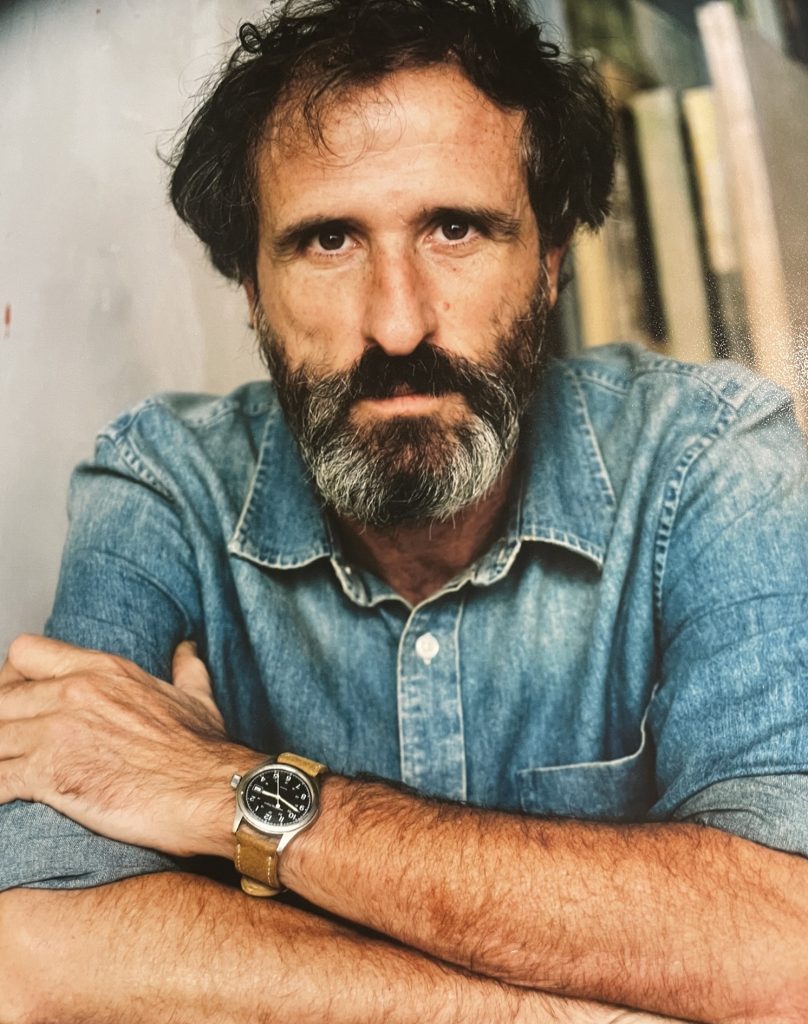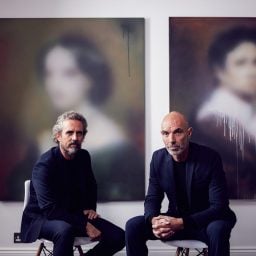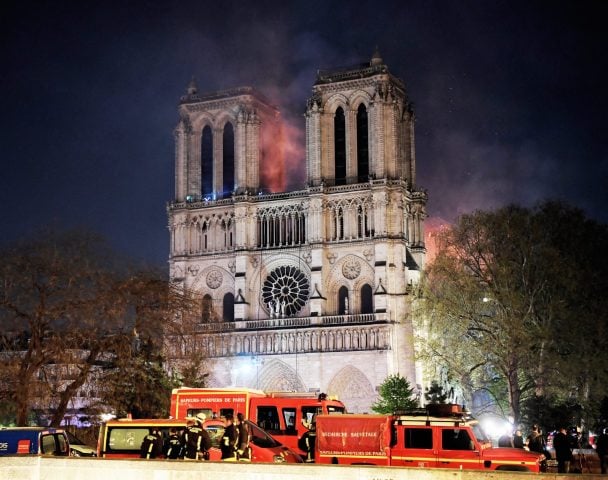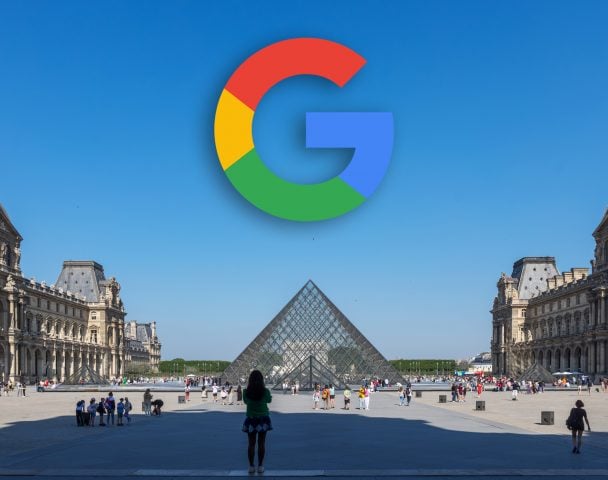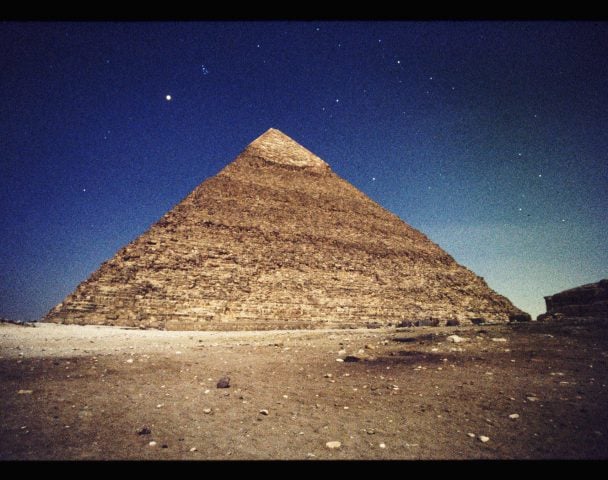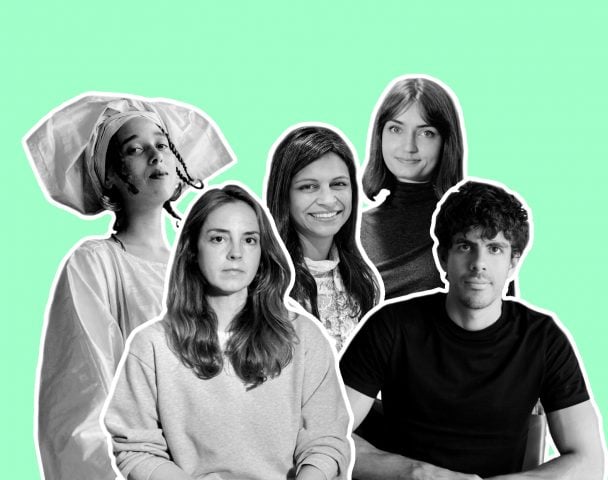Working within a personal visual lexicon comprised of typography and architectural forms, Catalan artist Ramón Enrich has developed his own imaginary artistic realm, where ideas of real and perceived space, abstraction, and composition can continually be explored. Desolate landscapes that are colorful, strictly organized, and uncluttered are noticeably devoid of human figuration, yet their empty windows and doorways suggest that a human could be present somewhere out of sight. The rather uncanny effect this creates recalls elements of both Minimalism and Surrealism, and his paintings almost resemble theater sets.
Although Enrich studied both art and art history at the University of Barcelona, it was his post-study travel as well as his work with artists and architects that truly influenced and shaped his development as an artist. This included spending time at the Judd and Chinati foundations in Marfa, Texas, where he later showed his work. Together, these experiences guided the trajectory of Enrich’s career as a practicing artist and the evolution of his artistic practice.
Over the past several decades, Enrich has continued to exhibit his work worldwide, including via the online gallery Artistics. We recently connected with Enrich to learn about his unique journey to becoming an artist, what has influenced him the most, and what he’s aiming to tackle next.
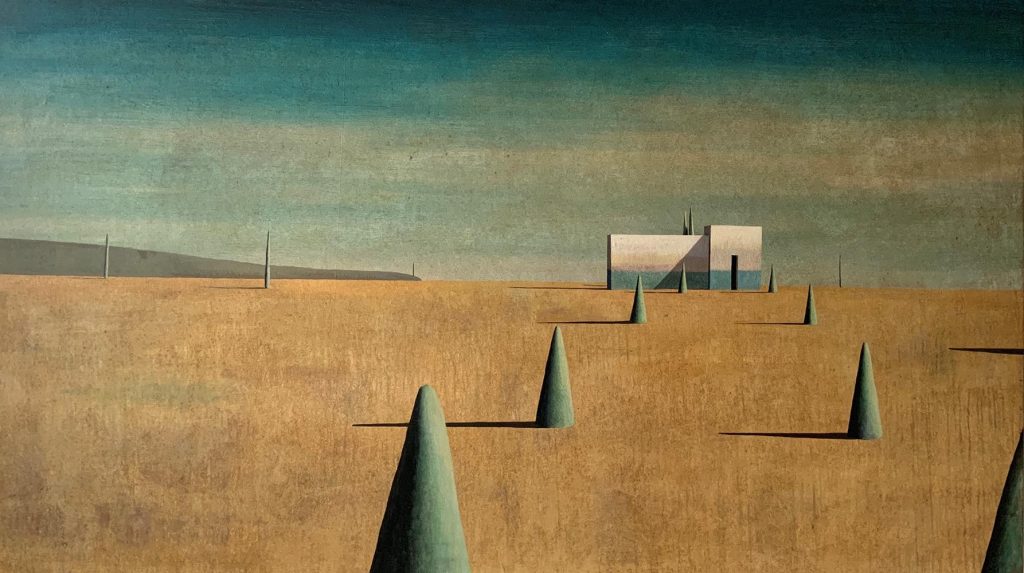
Ramón Enrich, ERCO L (2022). Courtesy of Artistics.
Can you tell us a little bit about your background and how you became an artist?
I remember going to Padua with my grandmother, Julia, and visiting the Scrovegni Chapel. I was nine years old and was stunned by Giotto’s frescoes. It was like witnessing a new mystery; it had a visceral, searing effect. The experience really moved me.
This is what happens when looking at Rothko: something very pleasant and troubling.
When I was very young, I started to appreciate music and drawing and discovered that rhythm, proportion, and harmony all have the same origins.
I took a fine art course and studied the history of art for a few years, but it was architecture that really made my heart sing.
After my studies, I decided to visit some artists I was interested in: Donald Judd in Marfa, David Hockney in Los Angeles, and Ed Ruscha and Julian Schnabel in New York.
I was up close and personal with design projects, and I also contacted Massimo Vignelli, Paula Scher, and David Carson, who taught me much more than university ever did. The best thing is we’re still friends now. I’m on WhatsApp with David Hockney and Richard Long, and I admire how they can simplify the problems of creation after so many years in the field.
Architecture plays a central role in your work. Can you tell us about what sparked your interest in architecture? Are there any specific architects or architectural styles that you are particularly drawn to?
Architecture gives me great pleasure. I find composition, landscape, and spatial perception a source of inspiration. It is form and function, and poetry and mathematics in one. Architecture and architectural painting allow me to play around with fiction and the mystery required to show the symbolic power of elements.

Ramón Enrich, RINT 3 (2022). Courtesy of Artistics.
Similarly, typography is a field you often engage with. What draws you to typography? How does it function in your paintings?
Typography is a classic discipline that’s very much like architecture. It provides context, narration, and emotion. I associate my use of typography with sculpture. Alphabets and letters interact on the surface to create relationships of tension that bring the space to life.
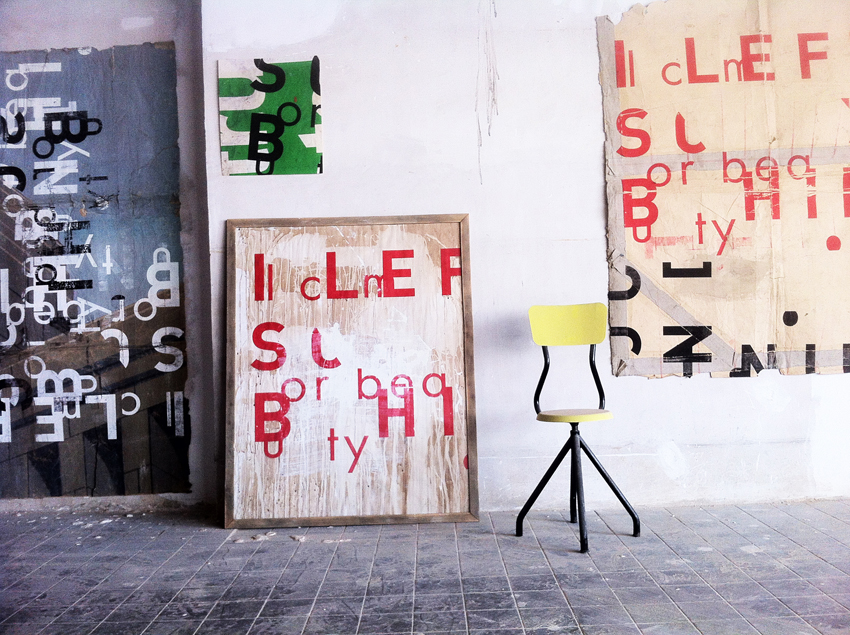
View of Ramón Enrich’s studio with typographic paintings. Courtesy of Artistics.
Are there any historical or contemporary artists that have influenced your work the most?
That’s a difficult question to answer. Obviously, I prefer physical art but, even more, I value the conceptual factor and the ritual that turns the everyday nature of things into something almost religious. I find Richard Long and Cy Twombly exciting because of their natural elegance and great simplicity, but then at times, I feel close to the portraits of Raphael or the mental spaces of Giotto.
What do you want viewers of your work to take away from it? What do you want the experience of viewing your work to be?
Art is fiction, a tale of invented memory that creates something out of nothing to influence from another point of view with psychological information. In my images, I want to travel to those shared states of emotion we all sometimes experience.
Your work conveys a deep understanding of the formal qualities of painting and art history. Do you consider your work and style more intuitive or more academic? Are any resemblances to historical movements and styles planned or organic?
I don’t think my work is academic. Actually, I think academic art lacks emotion and is something I don’t have any interest in. I prefer adventures where you don’t know what will happen. This is the creative path where unexpected and surprising ideas emerge. And it’s where the stimulus for evolution can be found. My intention is to produce scenes for reflection. I attempt to create a timeless moment within this frenetic modern world.
Can you tell us a bit about what you are working on now? What sources of inspiration have you been working with lately?
I’m currently working on a series of abstract paintings. I’m looking for simplicity by using blocks of color I construct architecturally. My narrative always seeks its own voice, and my conceptual field is forever focused on architecture, color, and landscape. I put together memories of the world through insinuation and my personal, subjective story.
Learn more about Ramón Enrich here.
